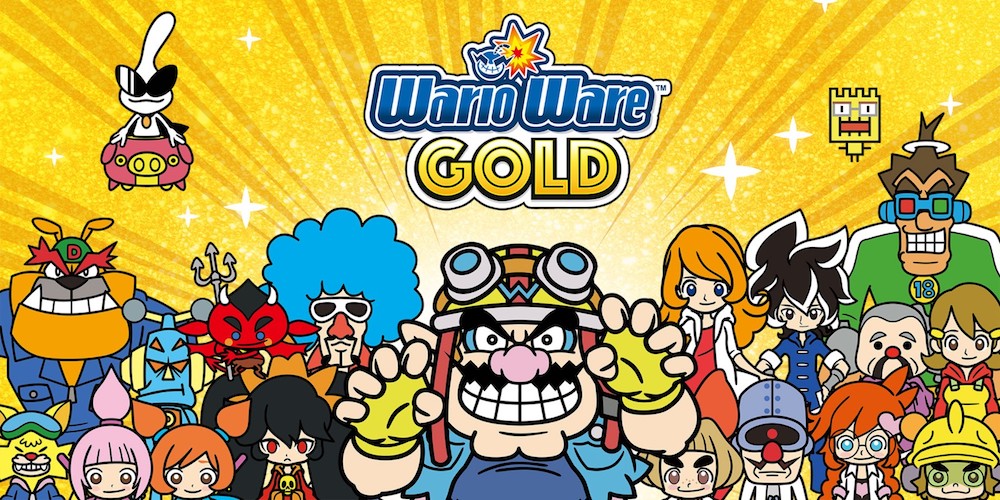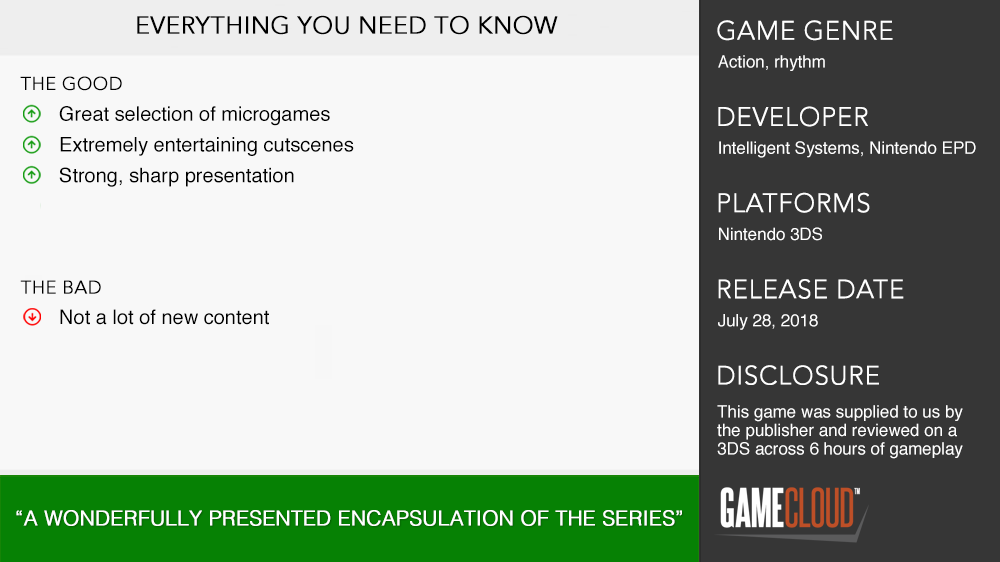
It’s not easy to get excited about a 3DS game this far into the Switch’s life. A new WarioWare, though, could definitely qualify as one of those late-to-the-party games worth dusting off a retired system for. WarioWare Gold isn’t exactly a brand-new entry in the series, however, but rather a “greatest hits” of the series in a neat new package. It’s far from the brand new WarioWare I’m desperate for, but with its succinct structure and classic weirdo WarioWare vibes, Gold is an appropriate summary of the wackiness it compiles.
The crux of the game is once again completing a sequence of simple, ill-explained microgames without too many failures, but WarioWare Gold brings together a few different flavours of microgames from throughout the years. Mash games are controlled with the D-Pad and A Button, Twist games are played by tilting the system, and Touch games, of course, use the touchscreen. The diversity here does wonders to differentiate the breadth of microgames you might have already spent plenty of time with, while independently collecting each style serendipitously gives each era of the series its own space. Once I’d unlocked modes that included every style of microgame in one run, I felt totally satisfied with Gold as a cohesive WarioWare package – even without Smooth Moves’ “Form Baton” functionality.

The big new bit of WarioWare here is the story mode. Each characters’ set of microgames fits a certain theme to match their little story vignette, as is series tradition. This time, the cutscenes either side of every level are not only entertainingly animated with tonnes of personality but are fully voice acted. The bizarre and questionable story scenes have always elevated the unsavoury tone of the series, but hearing each character speak really takes things to a new level. I was stoked to see a new cartoon short every time, and I was chuckling through to the end. I’m sure it’ll be divisive, but hearing Charles Martinet voice full coherent sentences as Wario was honestly super impressive to me. I never would have expected that Wario’s voice could even be translated into actual language, but Martinet kills it with sass, aggression, and violent R-rolling. The garlic stench practically reeks out of the screen.
Outside of the story mode, Gold offers Challenges; the same sets of microgames with unique twists on the rules. This is where you can find some of the toughest challenges in the game, along with split-screen and local multiplayer modes. A stand-out here is Sneaky Gamer; an adaptation of Game & Wario’s Gamer mode. As a definite highlight in the game, it’s nice to have it fully incorporated into WarioWare proper here, and the stress it creates is debilitating as ever. There’s a Capsule Machine too, in which you can unlock toys for the Toy Room. Coins earned from playing the game and completing achievement-like missions afford the toys, which range from historical Nintendo items to full-blown minigames. They weren’t a massive incentive for me to keep playing after I was done with the other stuff, but it’s certainly nice to have goodies racking up.

WarioWare Gold is a wonderfully presented encapsulation of the series, collecting so much of WarioWare history in one place, and managing to remain succinct while giving the player more to do every step of the way. It’s a short but sweet trip through a gonzo gallery of strange and satisfying microgames accompanied by exceedingly entertaining and endearing scenes. It might only barely be a step forward for WarioWare, but Gold does an admirable job of looking back.











